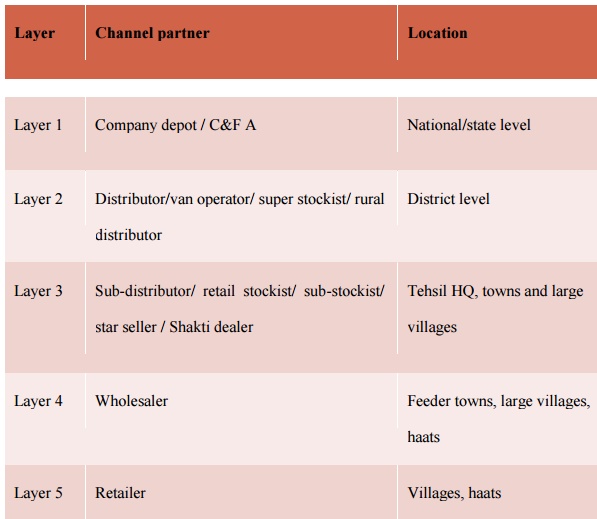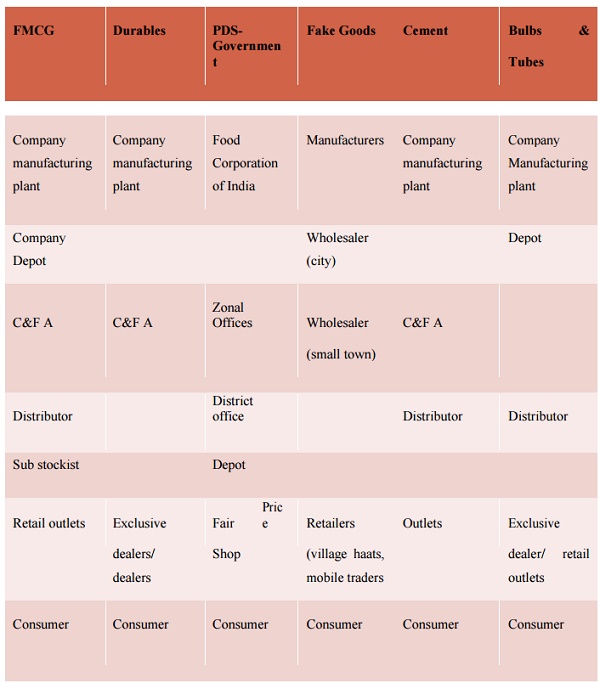Chapter: Business Science : Rural Marketing : Product Distribution
Distribution Strategy
DISTRIBUTION STRATEGY
Large number of small markets Dispersed population
and trade Poor road connectivity
Multiple tiers
Poor availability of suitable dealers Low density of
shops per village
Inadequate banks and credit facilities Poor storage
system
Low investment capacity of retailers
Poor visibility and display of products on rural
shop shelves. Poor communication of offers
1.Distribution Strategy
Ensuring Reach & Visibility –The
thing which is critical, is to get the Stock Keeping
Unit right, as rural retailer can‘t affo
environment, being first on the shelf in the product category and developed a
privileged relationship with the
retailer is a source of competitive advantage to consumer good companies.
Reaching upto Mandis, Towns, Semiurban
centres –Organizations can cater to rural needs for
consumer durables, clothes, kitchen equipment and agri-input by making their
products available upto feeder towns, semi-urban centers or mandis.
Targetting larger villages –There
are only 85000 large villages out of more than 6,38,000 villages. But
they have 40% of the rural population and 60% of total consumption.
Understanding of Peak seasons –Peak
season times in rural parts are Festivals, harvest and marriage seasons.
Bulk of the demand for the consumer durables concentrated during these times.
The rural consumers are in shopping mood and have the cash for the same at this
time. Organizations have to ensure that their products are available at these
times.
Delivery vans –Company
delivery vans which can serve two purposes; they can take the products
to the customers in select rural areas and also enable the firm to establish
direct contact with them and thereby provide an opportunity for promotion.
Collaboration for Distribution – Various
organizations with comparatively lesser distribution reach can
collaborate with organizations that already have achieved high penetration
levels in rural areas. For eg. P&G had tie-ups with Godrej, Marico
Industries and now its planning one with Nirma for distribution of Camay soaps.
Converting unorganised sector
manufacturers into distributors – Small scale manufacturers
have good knowledge of the territory and have good sales network. Organizations
like Exide are attempting to convert these small scale manufacturers to
become their dealers.
Company’s own
Distribution–ProjectShaktiofHUL isNetworkonsuchexample
2.Distribution
Channels in Rural India
Use of cooperative societies–There
are over 4 lakh co-operatives operating for different purposes like
marketing, credit and dairy cooperative in rural areas. For eg. Farmers
Service Co-operative Societies function like a mini
super market for rural consumers where they sell soaps, detergents, cloth,
seeds, fertilizers, pesticides etc. at economical and reasonable prices. Since
these societies have necessary infrastructure for storage and distribution,
companies may contact these societies to sell their products.
Use of Public Distribution System –In
India, the Public Distribution System is well organized. There are about
4.37 lakh fair price shops operating in the country. Since the PDS outlets
cover the entire country they can be utilized for marketing consumable items
and low value durables in rural areas.
Utilization of Petrol Pumps –These
petrol pumps, in addition to petrol/diesel, oil and lubricants are also
selling consumables such as soaps, detergents, biscuits etc, particularly on
the highways. These bunks may also think of stocking certain consumable
agricultural inputs like fertilizers, seeds and pesticides.
Agricultural input dealers –There
are about 2,62,000 fertilizer dealers in the country.
During off season most of the dealers don‘ to
motivate them so that they can sell other products also during their free time.
Shandies/ Haats/ Jathras/ Melas –Shandies
are periodic markets which operate in a weekly cycle. They offer a ready
distribution network and are steady, cheap and appropriate. Haats can be used
effectively for distribution, demonstration and sampling of daily need
products. Melas work best for introducing new brands and building brands
through the organization of events at the venue.
3.Accessing
Rural markets: Coverage Status in Rural Markets
Marketers have to ensure the reach of
their product to retail outlets, and they also need to motivate retailers to
stock their product or brand.
50% of the rural population resides in
the 1 lakh odd large villages. These villages are connected by all-weather
roads and they account for 60% of rural wealth.
HUL, Eveready, ITC etc are the companies
that have the most deeply penetrated rural distribution system just about cover
the retail network up to the 2000+ population villages.
4.Rural
distribution Channels
Five layers of distribution channels for the
movement of products from the company depot to the interior village markets.


5. Evolution of
Rural Distribution Systems
Historically, the rural distribution system has
included wholesalers, retailers, mobile traders, vans and weekly haats.
In the feeder markets, retailers act as wholesalers
and vice versa to sell to small retailers who come from surrounding villages.
Some town retailers send their salesmen to villages
to book orders and supply goods to these small retailers.
Wholesaling
50% of rural consumption is still routed through
wholesalers because they are located in nearby feeder markets, which are
frequented by village retailers to replenish stocks.
Indian wholesaler is a trader rather than a
distributor and therefore tends to support a brand during periods of boom and
withdraws support during periods of slump.
Rural markets were neglected by most companies due
to the low density of retail outlets and the small off-take per retailer.
Wholesalers based in feeder towns took advantage of this situation as village
retailers found it convenient to buy from these places. This resulted in the
hold of the market by these wholesalers, who often indulged in trade
malpractices in the channel.
Rural
Retail System
Rural India accounts for 65% of retail outlets in
the country. The logistics of feeding the 35 lakh retail outlets spread over 6
lakh villages is a tough task.
The high distribution costs due to geographical
spread and low volumes per outlet act as a barrier to the entry of products in
rural markets.
The average monthly sale per village shop is less
than Rs. 5000, which restricts the variety and range of the products stocked.
Since a significant portion of the sale is on
credit, it puts most village shops in a self-limiting sales cycle.
Despite the same product being available in the
village shop, 58% of villagers prefer to buy these from a haat because of
better price, quality and variety.
Stock
Turnover
Average value of stock per product category in
interior villages is about a third of that in feeder villages.
Off-take of packaged food stuff and tobacco is
higher in interior villages, whereas toiletries have a higher take-off in
feeder villages in comparison to other products.
The cash outlay of rural retail outlets is extremely
low and most of it is invested in fast moving brands and high margin
commodities.
The low off-take, low stocks and lower stock
turnover ratio together pose a challenge to the marketer of a new product that
how to occupy retail shelf space in rural markets.
Rural retail shelf space can be occupied by offering
consumers a combination of attractive margins, credit facility and servicing
that is superior to that offered by the
competition.
Rural retail Shelves Unlike urban retail shelves,
rural retail shelves are flooded with local and regional brands as these
promise the retailer higher margins and longer credit periods.
The number of product categories stocked by rural
and urban stores does not vary significantly. But what does vary is the number
of companies/brands. This difference in stocking pattern is because of poor
reach and difficulty in servicing stores.
The first task is making brands available, but
simultaneously marketers also need to make efforts to ensure their visibility
on rural retail shelves. Products are stocked in a cluttered and disorganized
way.
Slow-moving products covered with dust accumulated
over a period of time are a common sight. The visibility of brands is very poor
due to the absence of proper racks and display boxes and stands.
Brands that are advantageous to the retailer‘s
business are displayed prominently.
Therefore marketers need to devise strategies to
occupy rural retail shelf space by providing display and storage systems. (wall
mounted display strips for fairness creams and ice boxes for soft drinks.)
Vans
Mobile vans have an important place in the
distribution and promotion of products in villages.
In this system, the salesman loads the van with
stocks from the nearest stockist or company stock point and works the
surrounding markets.
Once he has covered all such markets, he moves to
the next stock point and starts covering the villages surrounding that stock
point.
Eveready batteries and torches are market leaders.
It established an extensive distribution network that includes 1000 vans, 4000+
distributors and 44 warehouses. These vans reach 6 lakh retail outlets
directly, each van making 50 to 60 calls per day. The company ensures that the
van revisits a retailer every 15 days. The stock for these vans is supplied by
the small town distributors.
Rural
Mobile Traders –The Last-Mile distribution
Mobile trading is an age-old, direct to home,
unorganized distribution system in rural India.
Sell
a variety of
daily-need products, mostly
local brands ranging
from detergent,
cosmetics,
and personal care products to garments and footwear.
They carry their product on bicycles, mopeds,
handcarts or on foot.
Mobile traders have a deep reach since they target
small villages to avoid competitions from shops in bigger villages. Their
direct selling approach ensures high involvement on the part of consumers and
since they have a fixed and committed consumer base, mobile traders enjoy a good
rapport with their clients.
Mostly sell fakes and local brands.
Haats
/ Shandies
Haats are the periodic markets and the oldest
marketing channel in India.
These markets provide people an opportunity not only
to purchase consumer goods, but also to sell surplus agricultural and allied
products.
They provide a first-contact point for villagers
with the market, a means for distributing local products and exchanging rural
surplus, an opportunity for buying daily necessities
as well as farm supplies and equipment and a place
for social, political and cultural contact.
Each haat caters to the need of a minimum of 10 to a
maximum of 50 villages, drawing around 4000 persons who come to buy and sell a
range of daily necessities and services.
Public
Distribution System (PDS)
PDS is a system of distribution for essential
commodities to a large number of people through a network of FPS (Fair Price
shops, often referred to as ‗ration shops‘).
The commodities are wheat, rice, sugar, edible oil
and kerosene. PDS has been evolved to reach the urban as well as the rural
population in order to protect consumers from the fluctuating and escalating
price syndrome.
It has emerged as a major instrument of t ensuring
availability of food grains to the public at affordable prices as well as for enhancing
food security for the poor.
PDS with a network of about 4.76 lakh FPS is the largest distribution network of its type in the world.
Related Topics